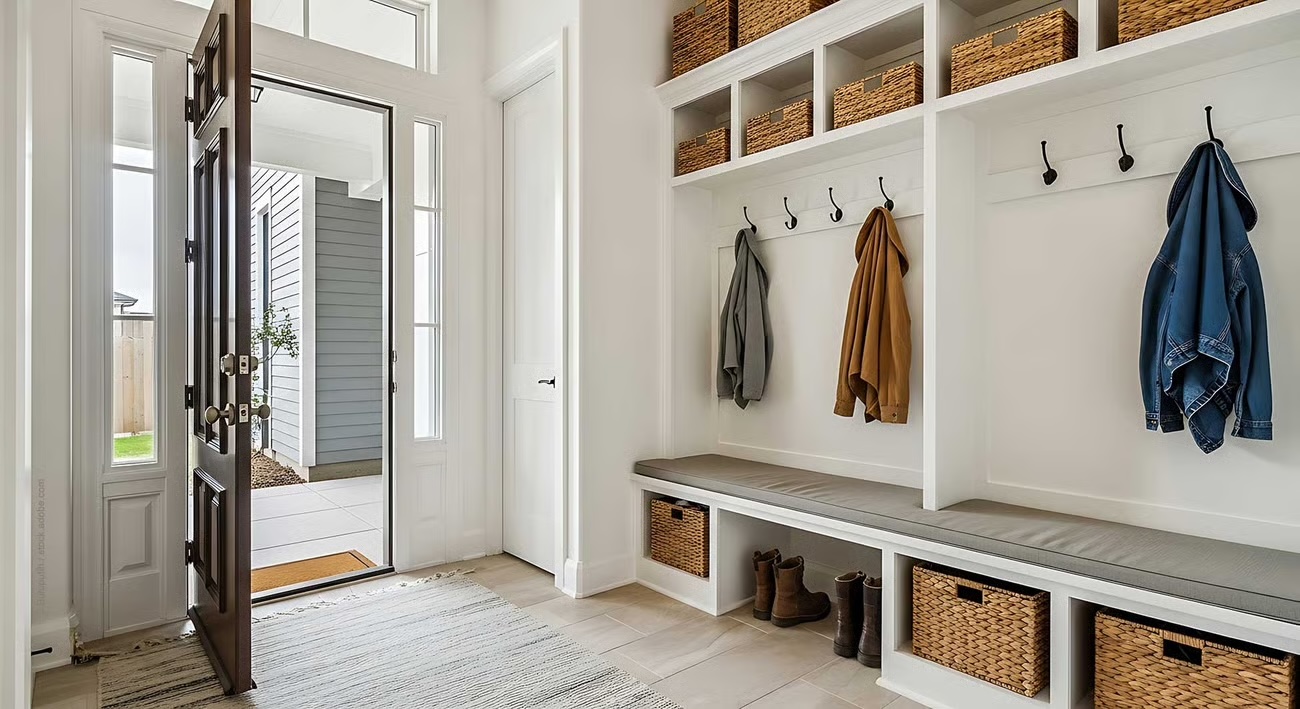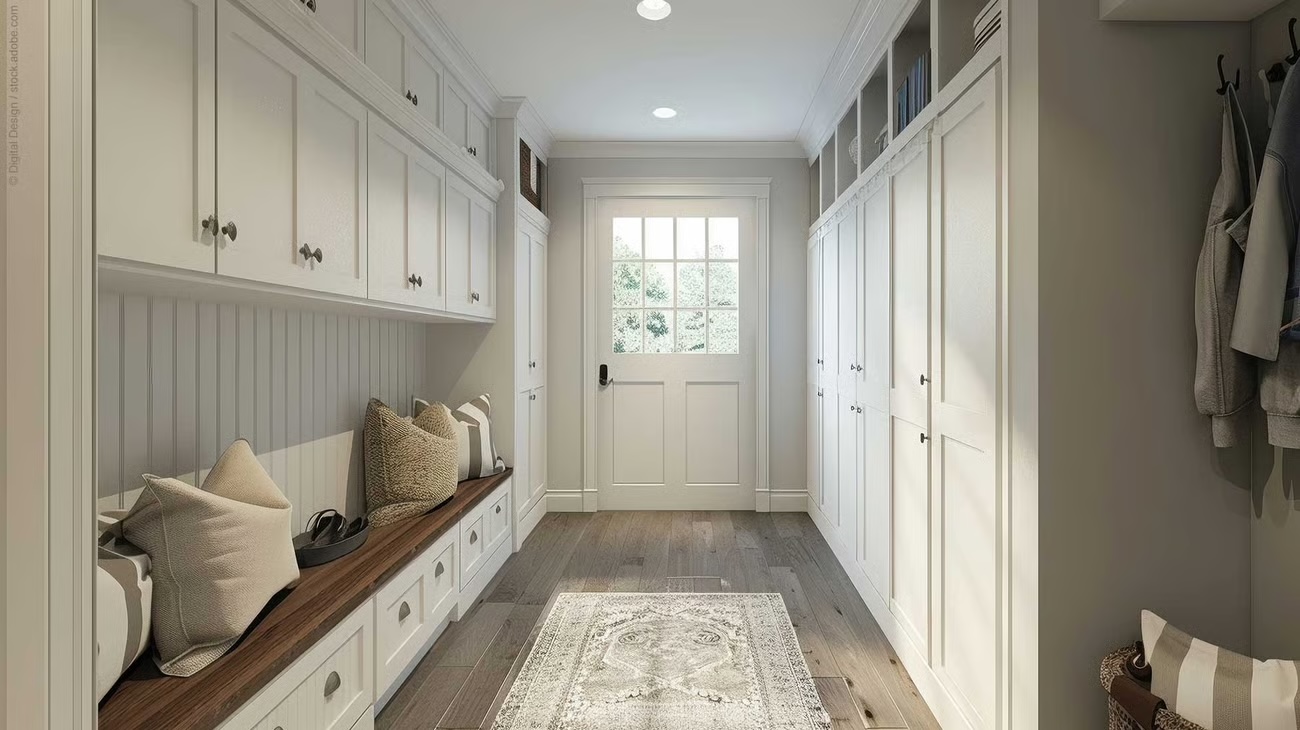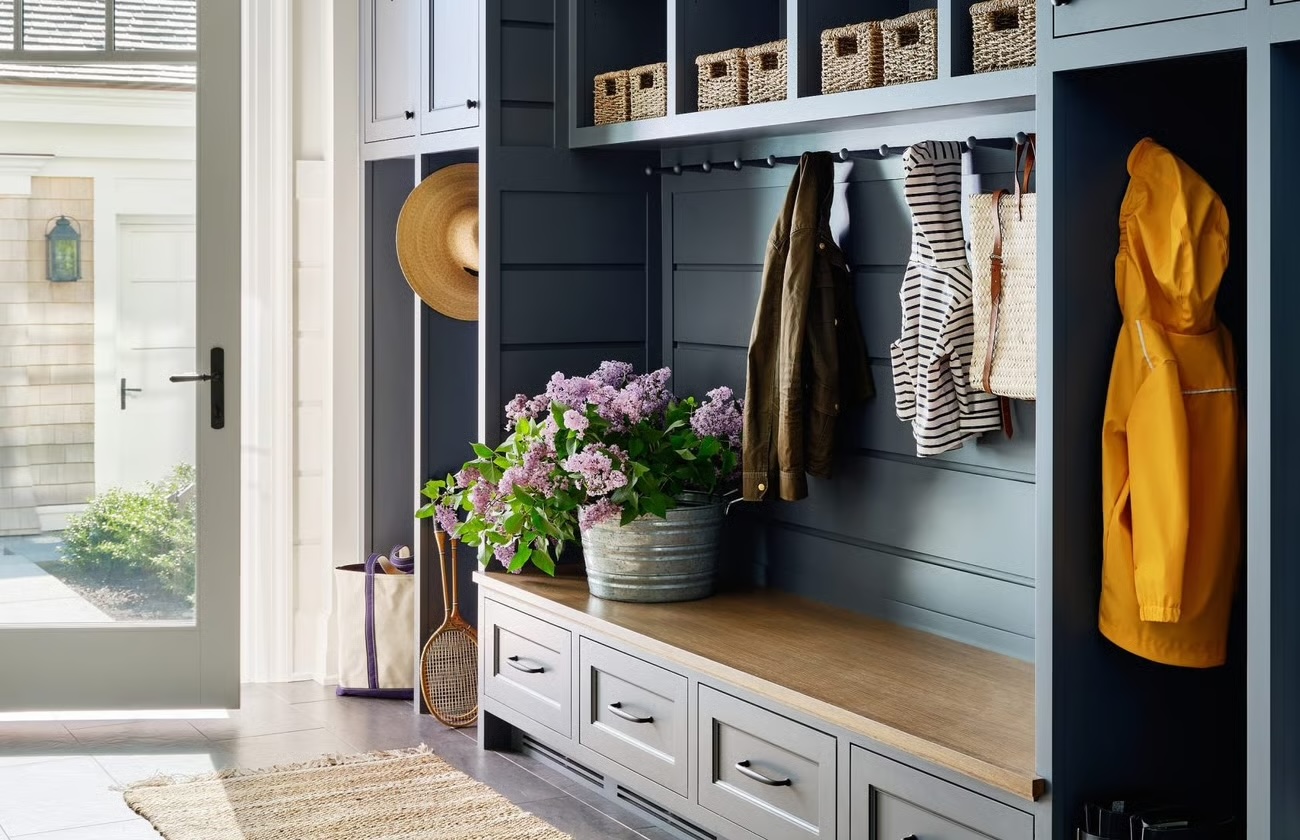
Walk into most homes with kids and you’ll see a similar scene: a jumble of shoes, coats, and bags near the door. Mudrooms solve this problem by creating a transitional space that acts as a buffer between the outdoors and your main living areas. Typically located near a side door or garage, a mudroom is a command center for daily life, a place where all those items that can clutter your home have a dedicated spot.
But mudrooms aren’t just for families with children. They’re also great for anyone who wants to keep their home serene and organized. Imagine a designated area for stowing away your workout bag, hiking boots, or winter coats — keeping the rest of your home clean and tidy.
The real beauty of a well-designed mudroom is its versatility. It can be customized to your lifestyle, whether you need storage for five pairs of cleats or gym clothes, or a charging station for work bags.
The Strategic Value of Mudrooms
A mudroom does more than organize your stuff. It’s a strategic upgrade that tackles multiple challenges at once. A well-designed mudroom improves:
- Organization & storage: Keeps everyday items from spilling into the rest of your home.
- Traffic flow: Prevents bottlenecks at your main entrance.
- Home protection: It contains dirt and moisture, keeping your floors clean.
- Resale value: Prospective buyers love the idea of a home that is functional and organized. As our lives get busier, more people are prioritizing these practical upgrades.
One thing many homeowners may not consider is how a mudroom can solve multiple challenges simultaneously. A well-designed mudroom addresses storage, organization, home protection, and traffic flow all at once.
 The Details: What Makes a Great Mudroom?
The Details: What Makes a Great Mudroom?
The best mudrooms are both functional and beautiful. They combine several key design elements to make daily life easier.
- Built-in storage: Give each family member their own space with cubbies, lockers, or cabinets.
- Seating: Install a bench to provide a comfortable place to sit while putting on shoes.
- Hooks & shelves: Place hooks at different heights to accommodate both adults and children, and use open shelving for items you need to grab quickly.
- Durable materials: Opt for practical flooring, like tile or vinyl, which can handle wet shoes and muddy boots.
- Special features: If pets are part of your family, a mudroom is an ideal place to store items for their care. A pull-out cabinet for food bins and bowls, and hooks or drawers for their leashes, is perfect. And consider installing a dog washing station to make bathing your pets and washing off muddy paws easy and convenient. If you’re a gardener, you might consider installing a potting bench with a deep sink and storage for pots and gardening tools.
Don’t forget the small but essential details like good lighting and electrical outlets for charging devices and washable rugs that trap water and dirt before it can be tracked into other areas of your home.
The 2025 Mudroom Trend: Luxury Meets Function
This year’s mudroom designs are anything but utilitarian. Rich cabinet colors, elegant finishes, and a variety of lighting transform these spaces into beautiful extensions of your home’s overall design. The days of treating mudrooms as purely functional afterthoughts are over.
 Getting Started: Turning Your Space into a Mudroom
Getting Started: Turning Your Space into a Mudroom
The good news is you don’t always need a complete room addition to create an effective mudroom. Many homes have underutilized spaces that can be converted, like a wide hallway, a section of a garage entry, or even a corner of the laundry room.
The key to a successful mudroom project is to work with a design-build remodeling contractor. A professional can help you maximize the space you have, ensure proper ventilation and lighting, and create custom storage solutions that fit your family’s unique needs.
Ready to turn your chaotic entryway into an organized, beautiful mudroom? The investment pays off every single day by saving you time, reducing stress, and increasing your home’s value.
